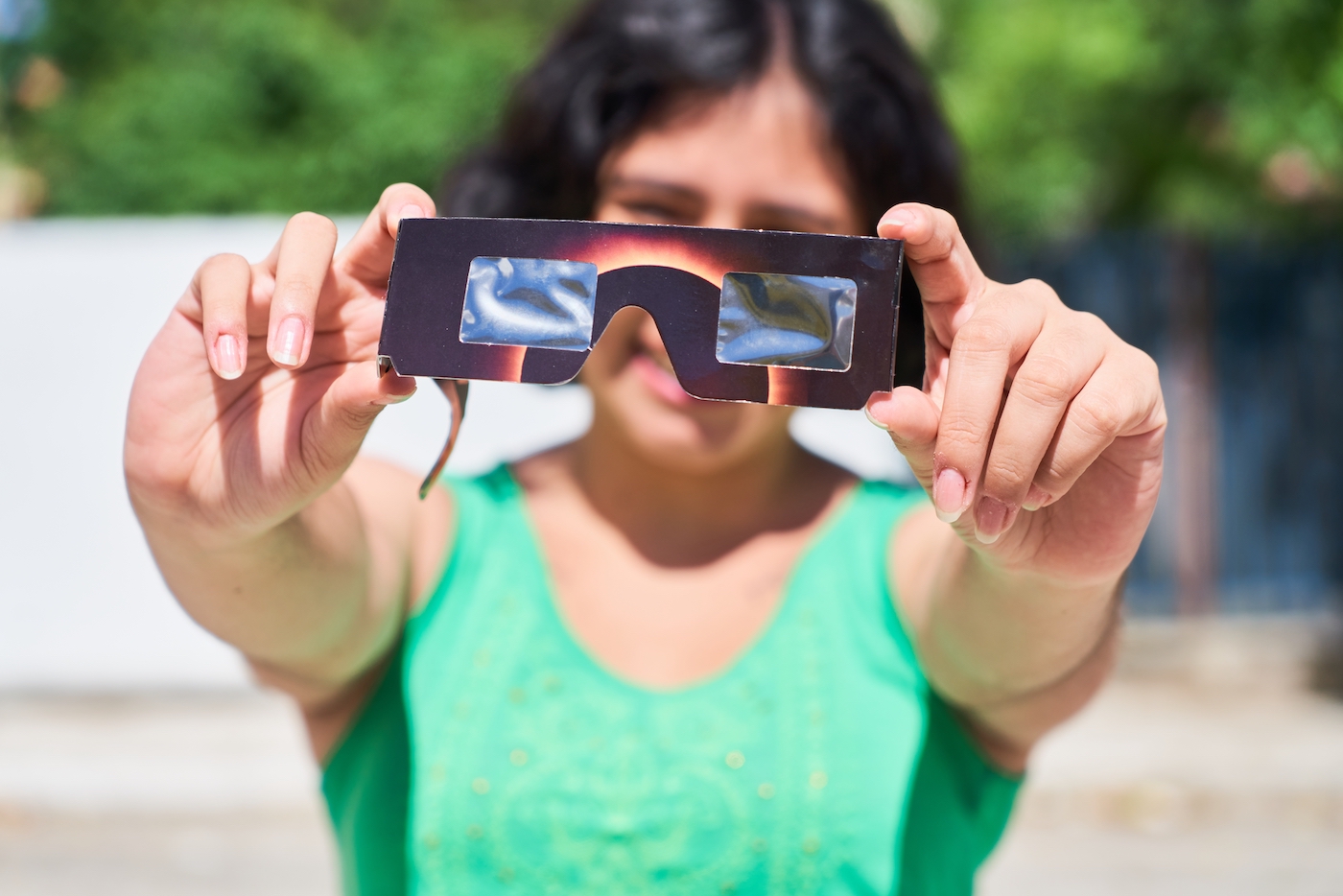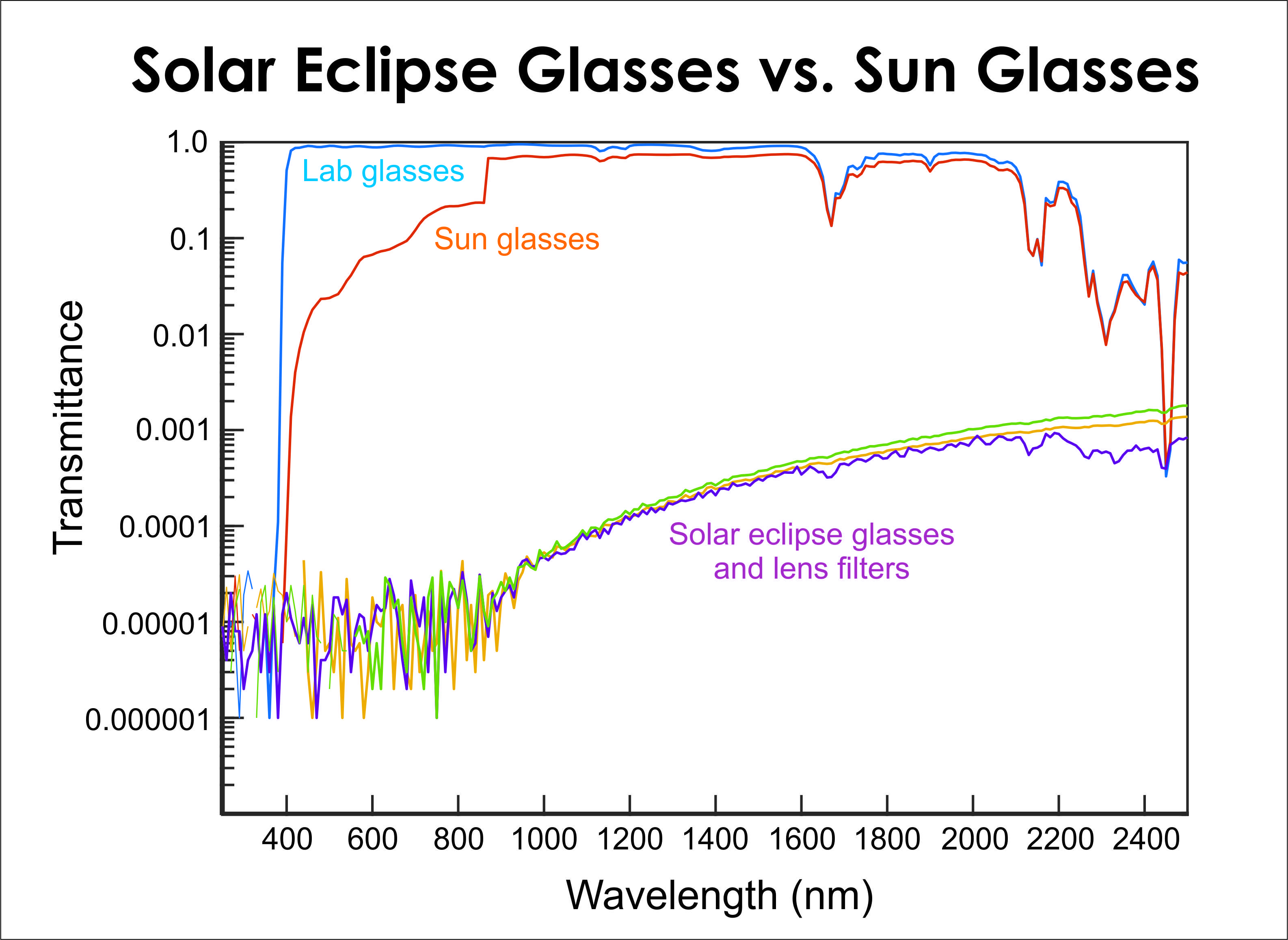How Do Eclipse Glasses Actually Work?
A combination of materials that reflect and absorb light make it safe to look right at the sun.

On April 8, the moon will pass between the Earth and the sun, creating a celestial spectacle visible from most of North and Central America and the Caribbean. Many people will see a partial eclipse—the sun looking like someone took a bite out of it—while those in the path of totality could witness a total solar eclipse, with the moon completely blocking the sun. As the event unfolds, hundreds of thousands of people across the continent will put on eclipse glasses and stare straight at the sun. But what makes those eclipse glasses—often simple cardboard frames with two thick films in place of lenses—so effective?
The dark film in eclipse glasses is a type of solar filter, meaning it is meant for viewing the sun. While some solar filters are designed to make one specific wavelength of light visible, eclipse glasses fall into a category called neutral density filters. That means they dim light across all wavelengths. Eclipse glasses dim sunlight enough to make it safe for human eyes by combining two materials—a shiny layer on the front of the film, and a thick dark layer on the back. The shiny layer typically contains aluminum or chromium and reflects light away from the viewer. The thick dark layer is “black polymer,” a plastic darkened with carbon particles, which absorb all wavelengths of light. (That’s why carbon looks black to us—it is very good at absorbing light.) The result is a filter so powerful that it’ll make your surroundings look pitch black.
“Eclipse glasses let in thousands of times less light [than regular sunglasses],” says Dr. Ashley Greeley, a research heliophysicist at NASA Goddard Space Flight Center.
Anyone looking at the sun should make sure their eclipse glasses comply with the safety standard known as ISO 12312-2. To meet this standard, solar viewers must let in no more than .0032% of visible light, and also comply with limits on the amount of ultraviolet and infrared light they transmit.

One of the dangers of simply putting on several pairs of regular sunglasses—rather than proper eclipse glasses—is that while it may seem dark enough to look at the sun without much discomfort, there could still be ultraviolet and infrared rays damaging your eyes without you feeling, or even realizing, that damage is being done.
“Ultraviolet and infrared are more dangerous in some ways [than visible light] because we don’t react to them,” says J. Patrick Haas, senior instrument engineer with the Heliophysics Science Division at NASA Goddard Space Flight Center. Because regular sunglasses simply aren’t designed or standardized for viewing the sun directly, it’s not safe to use them that way, even several at a time.
The one and only time eclipse observers should remove their glasses is during the brief period of totality, when the moon is fully blocking the sun. But when watching the partial eclipse—whether from outside the path of totality or simply before or after totality, it’s crucial to keep those glasses on when looking at the sun.
Greeley and Haas say to hang onto your eclipse glasses even after April 8 because they’re not just for eclipses, they’re for looking at the sun anytime. Even without a telescope, it is possible to observe sunspots on the surface of the sun through eclipse glasses. Sunspots occur more frequently during the period in our sun’s solar cycle called solar maximum, which is expected soon, or may have already begun. “The sun is very active right now,” Haas says. “It’s more active than in my entire career.”
If you try to order eclipse glasses online, you might find that many recommended options are sold out, only available in bulk, or won’t ship to you in time. Don’t fret! Depending on where you are, you might be able to find eclipse glasses in the following places:
This was an installment of our 2024 limited-run eclipse newsletter, “Moon Mail.” See the full “Moon Mail” archive here.
Robin Kazmier is Senior Editor, Digital. She writes and edits articles and helps shape Science Friday’s digital strategy. Her favorite bird is the squirrel cuckoo.